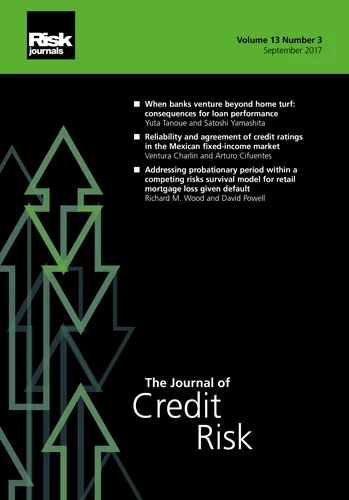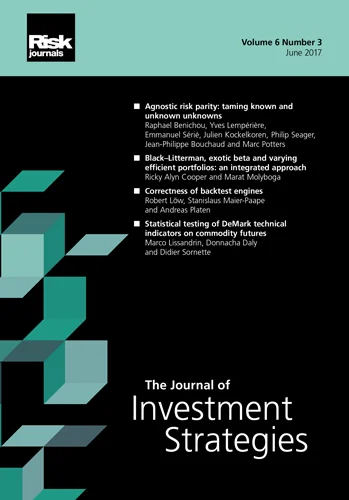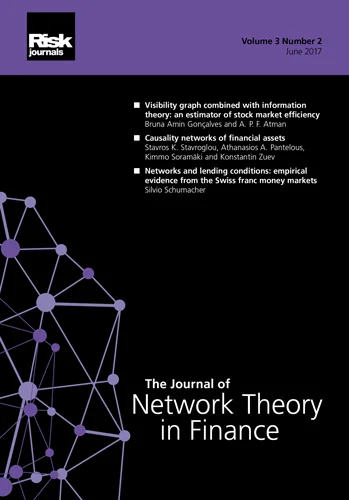Journal of Credit Risk
ISSN:
1755-9723 (online)
Editor-in-chief: Linda Allen and Jens Hilscher
Volume 7, Number 1 (March 2011)
Editor's Letter
Ashish Dev
JPMorgan Chase, New York
In this issue we present three research papers and one technical report. The first research paper, "Treatment of double default effects within the granularity adjustment for Basel II", is by Sebastian Ebert and Eva Lütkebohmert. The paper investigates granularity adjustments by using double default effects to capture the idiosyncratic risk of portfolios with partially hedged positions, and derives a general analytical solution for this problem. The authors start by summarizing the granularity adjustment methods that have been proposed for the quantiles of the loss distribution of a portfolio. Since these methods do not account for guarantees, the paper proposes extensions to the case where some exposures to obligors are partially hedged by one or several guarantors.
In this issue we present three research papers and one technical report. The first research paper, “Treatment of double default effects within the granularity adjustment for Basel II”, is by Sebastian Ebert and Eva Lütkebohmert. The paper investigates granularity adjustments by using double default effects to capture the idiosyncratic risk of portfolios with partially hedged positions, and derives a general analytical solution for this problem. The authors start by summarizing the granularity adjustment methods that have been proposed for the quantiles of the loss distribution of a portfolio. Since these methods do not account for guarantees, the paper proposes extensions to the case where some exposures to obligors are partially hedged by one or several guarantors. The guarantors are assumed to be obligors themselves in the portfolio. The paper provides an analytic formula for the granularity adjustment in an extended single-factor CreditRiskC setting, incorporating double default effects and thereby accounting for guarantees and their effect in reducing credit risk in the portfolio.
The second research paper, “A multiname first-passage model for credit risk”, is by Don L. McLeish and Adam Metzler. It introduces a novel multiname first-passage framework by expanding the underlying Brownian motion of the Black–Cox model to incorporate trend and volatility for credit risk. Introducing the systematic risk processes in this way helps the authors to calibrate models to market quotes for CDX index tranches. Starting with the general framework and pointing out what needs to be improved in the Black–Cox model, the authors progress to the investigation of a linear model and thenmove on to conclude with a dynamic model. Their investigations also cover the roles of both systematic and idiosyncratic effects by giving economic justifications. The paper describes an original way of introducing correlation between single-name models to create a multiname one. The different numerical illustrations on the CDX index show the ability of the model to fit market quotes of both credit default swap spreads and collateralized debt obligation spreads rather well. The third research paper, “Ageneralized credit value adjustment”, is by Mats Kjaer. In this paper the author derives a generalized credit value adjustment (CVA) formula from which the unilateral and bilateral CVA, the extinguisher CVA and the set-off CVA follow as corollaries. Thus, different types of CVAs can be computed with one generalized CVA formula. The paper then shows how this CVA can be hedged semistatically in a simple credit model, which is beneficial when managing risk in portfolios under counterparty risk. Finally, the author shows under what circumstances subtracting a CVA from the counterparty risk-free value is equivalent to discounting the cashflows with the funding rate of the counterparty.
A technical report describes a particular practical technique and enumerates situations in which it works well and others in which it does not. Such reports provide extremely useful information to practitioners in terms of saved time and minimizing duplication of effort. The contents of technical reports complement the rigorous conceptual and model developments presented in the research papers and provide a lot of value to practitioners.
The technical report in this issue, “Lead–lag relationships and rating convergence among credit rating agencies”, is by Andre Güttler. The purpose of the paper is to determine whether there are lags in the assignment of risk ratings by any of the leading rating agencies. First, the author describes the role of ratings. The author then introduces different hypotheses on risk assessments and risk assignment by the agencies. Finally, the author discusses statistical tests to determine whether there are inconsistencies in rating assignment or convergence of opinion by the agencies. The dataset used is a sample of corporate issuers rated by Moody’s and Standard & Poor’s for the years 1994–2005.








